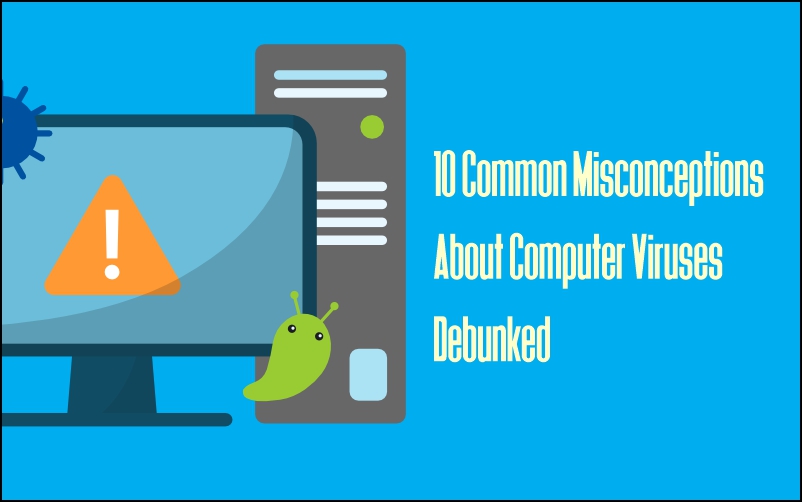
This article describes 10 Common Misconceptions About Computer Viruses Debunked.
Computer viruses have been a persistent threat since the early days of computing, but misconceptions about them abound. These misunderstandings can lead to ineffective cybersecurity practices and leave individuals and organizations vulnerable to cyber attacks. In this blog post, we’ll debunk 10 common misconceptions about computer viruses to help you better understand the nature of these threats and how to protect against them.
1. Misconception: “My Computer is Safe Because I Have Antivirus Software Installed.”
– Reality: While antivirus software is essential, it’s not foolproof. New viruses and malware variants emerge daily, and antivirus programs may not detect them immediately. Regular updates and user vigilance are necessary to stay protected.
2. Misconception: “I Only Visit Safe Websites, So I Can’t Get Infected.”
– Reality: Trusted websites can still be compromised by cybercriminals, who inject malicious code or ads. Additionally, legitimate sites can unknowingly host infected files. Always exercise caution and use security measures like ad blockers and script blockers.
3. Misconception: “Only Windows PCs Can Get Viruses.”
– Reality: While Windows has historically been a primary target for viruses due to its widespread use, no system is immune. Mac OS and Linux systems are also vulnerable, albeit to a lesser extent. Mobile devices running iOS and Android are not immune either.
4. Misconception: “Viruses Are Only Spread Through Email Attachments.”
– Reality: While email attachments are a common vector for viruses, malware can spread through various channels, including malicious websites, social media, file downloads, removable media (USB drives), and network vulnerabilities.
5. Misconception: “My Device Is Safe Because I Use Public Wi-Fi Securely.”
– Reality: Public Wi-Fi networks are often unsecured, making them prime targets for cybercriminals to intercept data and deploy malware. Always use a virtual private network (VPN) when connecting to public Wi-Fi to encrypt your traffic and enhance security.
6. Misconception: “Viruses Only Cause Annoying Pop-Ups and Slow Performance.”
– Reality: While some viruses display pop-ups or slow down system performance, others can be far more damaging. Viruses can steal sensitive information, encrypt files for ransom, or turn devices into botnets for launching large-scale cyber attacks.
7. Misconception: “I Can’t Get Infected Because I Have a Firewall.”
– Reality: Firewalls are essential for blocking unauthorized network traffic, but they can’t protect against all types of malware. Firewalls primarily focus on inbound threats, while malware can still infiltrate systems through other means, such as email or USB drives.
8. Misconception: “I Don’t Need to Update My Software Regularly.”
– Reality: Software updates often include patches for security vulnerabilities that cybercriminals exploit to spread malware. Failing to update your operating system, applications, and antivirus software regularly leaves your device susceptible to attack.
9. Misconception: “Viruses Only Target Individuals, Not Businesses.”
– Reality: Businesses are lucrative targets for cybercriminals due to the potential for financial gain and access to sensitive data. Small businesses, in particular, may lack robust cybersecurity measures, making them vulnerable to ransomware attacks and data breaches.
10. Misconception: “I Can Remove Viruses Myself With Free Online Tools.”
– Reality: While some free antivirus tools can help detect and remove certain types of malware, they may not be as effective or comprehensive as paid solutions. Professional assistance may be required for complex infections to ensure complete removal and system restoration.
By debunking these common misconceptions about computer viruses, we hope to raise awareness of the diverse and evolving nature of cyber threats. Staying informed and adopting proactive cybersecurity practices, such as regular updates, user education, and robust security measures, are essential for protecting yourself and your organization against malware and other cyber attacks. Remember, in the ever-changing landscape of cybersecurity, vigilance is key.
To obtain software and courses that could enhance your digital skills, visit techlover.com.ng
Or visit any of our online stores,
Originally posted 2024-04-24 10:21:58.



















